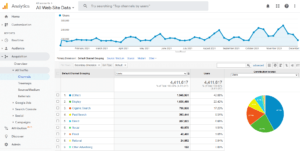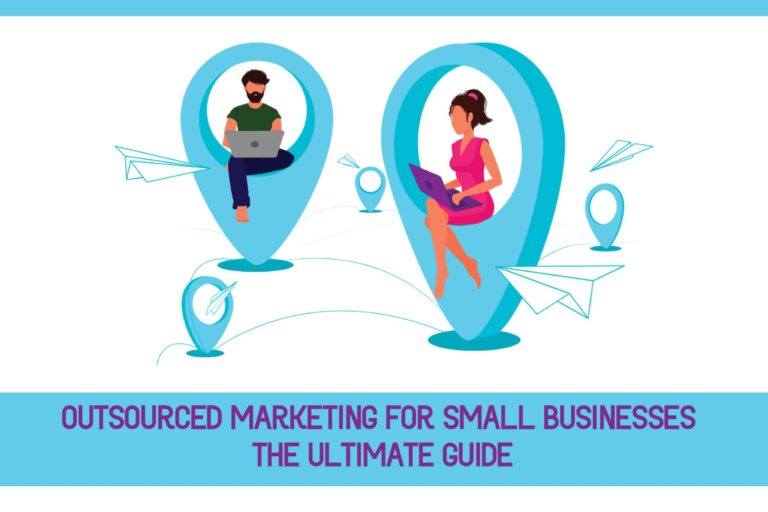TABLE OF CONTENTS
Have you ever wondered what is the difference between direct and organic traffic? Have you been informed that direct traffic is merely people who type your website’s URL into their browser? Is direct traffic considered organic traffic on your website? In this blog post, we will answer these questions by explaining how Google Analytics defines each type of traffic. We’ll also go over the traffic sources to show how you can understand your website performance.
Is Direct Traffic Organic Search?
No, direct traffic is not considered an organic search. Direct traffic can be broken down into two categories: people typing in your website’s URL and bookmarking a page on their browser or visiting an entry from an unknown source or website. Additionally, traffic from the email campaigns that did not tag properly, considered as direct traffic by the source. Before discussing direct traffic and organic search traffic, let’s take a deeper look at the various traffic sources.Traffic Sources: Understanding the Difference

The traffic sources you see on your website are important elements to understand your marketing performance, especially for small businesses. According to the URL parameters, web analytics platforms divide traffic sources into the following groups:
Direct Traffic: Not only does direct traffic come from people who type your website’s URL into their browser, but any unknown incoming traffic is also considered direct traffic.
Organic Traffic: Gained traffic from the search engines such as Google, Bing, and Yahoo. This traffic is not paid but earned thanks to your website’s SEO.
Paid Search Traffic: Any traffic comes from paid search campaigns of search engines such as Google Ads, Bing Ads, and more.
Email Traffic: Traffic from email marketing which tagged properly when you send them to your customers/leads.
Social Traffic: Any traffic comes from the social media platforms such as Facebook, Twitter, LinkedIn, and other platforms.
Referral Traffic: When a user finds you through a site and not from a search engine or media platform. This user landed on your website through a link that is placed on a different website.
Other: If your traffic does not match any of the criteria listed above, it is categorized as Other. If you tag traffic as “other” it also falls within this category.
What is Direct Traffic Exactly & How Does it Work?
The plain and simple explanation of direct traffic is when a user types your website’s URL into their browser. Additionally, if a person adds your small business’ URL to his bookmarks, each time he hits the bookmark, it generates direct traffic. However, there is more to consider. We must investigate how does direct traffic work.
When you click on a link on another website, your previous website is recorded as the referrer in Google Analytics. The referrer website might be search engines, social media platforms, blog pages, or other websites which has your website URL. However, because of privacy or technical difficulties, the referer website may not share information with your website and you can not track the traffic source.
So, What are the Real Sources of Your Direct Traffic?

We’ve already learned that direct traffic is a difficult situation since it’s not an obvious source and there are various scenarios in which Google Analytics identifies them as direct traffic. You could obtain very high numbers for your direct traffic, and you want to understand why. Let’s look at some examples of direct traffic on your website’s source.
Scraping with Bot Traffic: If you scrape a website using bot traffic, which is non-human traffic that visits your pages, it may cause a problem for the referrer website and you will see the traffic as direct traffic.
HTTPS to HTTP Referrals: If your website does not have an SSL certificate, it is classified as an HTTP site, which is not ideal for small businesses. A person who visits your website from a site with an SSL certificate means the referrer information has been hidden. In the end, direct traffic becomes the source of traffic since the referrer data is missing.
Non-Internet Documents: If you click on a link in a Word document, Excel document, PDF, or another non-web document, your browser will open this site in a new tab just as you specified the URL.
Social Private Apps: Your website will not be able to interpret the referer if you click on a link where your friend shared through Whatsapp Web, Skype, Viber, or another sort of messaging application.
Bad Redirects & Wrong Tracking Codes: If you have a bad redirect or missing tracking code on your website it can cause direct traffic. For example, if the web address of the page leads to another destination instead of where you intended it to be located. If this happens with an error message then Google Analytics considers that as direct traffic.
What is Organic Traffic Exactly & How Does it Work?
Organic search is very straightforward. A website earns organic traffic when its site appears as a natural result on a search engine. The site has no paid inclusion, and the traffic earned through the content. The search engine algorithm decided to show your website due to its relevance and quality. The benefits of SEO for small businesses are more than you think.
When you develop your small business’s website, ensure that it has the appropriate SEO strategy. You can take a look at the best SEO infographics to boost your website. Especially, targeting the main keywords is critical. Search engines will like your website and begin ranking it higher if you provide valuable information.
What is the Difference Between Direct and Organic Traffic?
The user’s intended purpose is the main distinction between direct traffic and organic search. If you get organic traffic, especially from non-branded search queries, it shows that your SEO efforts were successful. On the other hand, if most of your overall traffic comes from direct visitors, it indicates that they have a high degree of loyalty to your small business.
Let’s use a simple example to illustrate this. If you look for “coca-cola” (branded keyword) and click on the link on SERP (not the sponsored ad), the website will receive organic traffic. It becomes direct traffic if you type your browser address into cocacola.com, which shows that you are a loyal customer.
In any scenario, you should have both direct traffic and organic search traffic to your website. Even you are a small business owner, you must implement the right SEO strategy to take a step forward just like other small businesses. Here take a look at a case study for a small business where they elevated their website thanks to SEO with Marganics.
Are You Still Not Sure About the Source of Website Traffic?
We’ve already addressed the differences between direct traffic and organic traffic above. Furthermore, we’ve discussed instances where Google Analytics classifies the source of visitors as direct traffic and how you can prevent this to have accurate data. If you have any questions about your website’s traffic source or if there is a problem with your Google Analytics, Marganics can assist you in better understanding. To get more information and boost your website on search engines with tailor-made SEO solutions, contact us now!
![Ultimate SEO Guide for Shopify App Listing [2023]](https://marganics.com/wp-content/uploads/2022/10/Ultimate-SEO-guide-for-shopify-app-hero-image-768x512.jpg)

